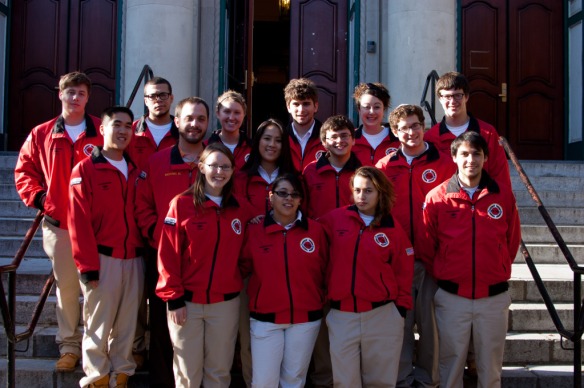By Anja Filan, corps member serving on the Bank of America team
Whether it be teaching their classes, conferencing with parents, planning lessons, or meeting with students during lunch and recess, teachers are constantly on the move. Because we all know that breakfast is the most important meal of the day, what better way to thank teachers than by providing them with a well-balanced, healthy start the day?
Overnight Oats are easy to make and filled with fiber, protein, omega-3 fatty acids, and, most importantly, are absolutely delicious! Below is the recipe for this healthy, hearty, and delicious breakfast treat—a perfect entrée for a teacher appreciation breakfast!
Chocolate Cake Batter Overnight Oats
(Adapted from Rabbit Food for my Bunny Teeth)
2 cups whole rolled oats
2 cups almond milk (or milk of your choice)
4 ripe bananas
4 tbsp chia seeds
4 tbsp unsweetened cocoa powder
4 tbsp maple syrup, honey, or agave
2 tsp cinnamon
2 tsp pure vanilla extract
Mix all of the ingredients until blended; then, leave in the fridge overnight. When you take them out in the morning they’ll be a bit more dense and solidified, and should resemble oatmeal. You can either warm them on the stove for 10 minutes on medium-low heat, or eat them cold.
Don’t have chia seeds? Not to worry! You can add flax seeds, hemp hearts, or leave out the seeds all together. Sometimes, I add toasted sunflower seeds, walnuts, pecans or almonds for a little extra protein.
If your school is a nut-free environment, you could substitute dates, figs, or apples! The great thing about Overnight Oats is that variation possibilities are endless. Adding fruits, seeds, nuts, berries, or sweeteners of all sorts will not change the consistency and will allow you to put your own special touch on your breakfast creation!
A strong breakfast packed with protein, carbs, fiber, and Omega-3’s will give your teachers a powerful start to the morning. What better way to express gratitude than providing your teachers with the tools to kick-start their day with some power foods!
About the author:
Anja Filan is a 2013-2014 corps member serving on the Bank of America team at Young Achievers Science and Math Pilot K-8 School in Mattapan.






 A Kid’s Guide to Native American History
A Kid’s Guide to Native American History Trail of Tears: The Rise and Fall of the Cherokee Nation
Trail of Tears: The Rise and Fall of the Cherokee Nation Spirit of the New England Tribes: Indian History and Folklore, 1620-1984
Spirit of the New England Tribes: Indian History and Folklore, 1620-1984 Turtle Island: Tales of the Algonquin Nation
Turtle Island: Tales of the Algonquin Nation Bury My Heart at Wounded Knee
Bury My Heart at Wounded Knee



